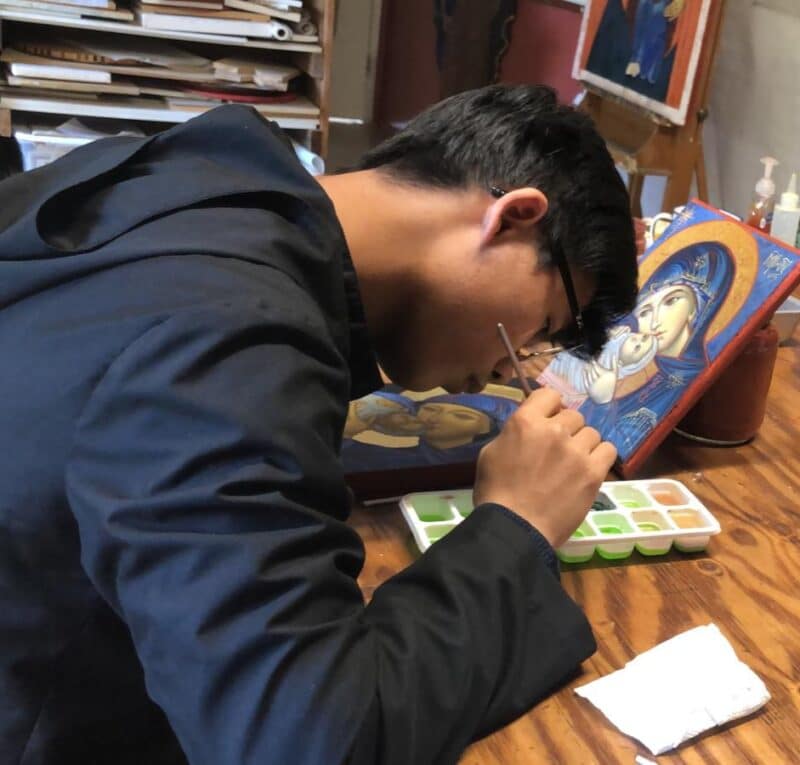An important Council, or gathering, of Church leaders took place in 787 AD at Nicea in Asia Minor, modern day Turkey.
The Council of Nicea decreed that holy images (icons) of Jesus, his mother Mary, as well as the angels and saints, and other sacred images, such as the crucifix, are fitting objects of veneration, but not of worship, which is due to God alone.
Hence, in the tradition of the Church, the use of icons for private and public prayer is meant to draw believers to remember those who are represented in the icons, who serve as models for Christians, aspiring to nearness to God.
Painted depictions on wood panels, as well as carvings of stone and wood (what we often call statues), are to be given respectful veneration.
The Council of Nicea stated: “The honor (or veneration) paid to a holy image (of the Lord, his mother, the angels and saints) passes on to the prototype being represented. The one who reveres the image reveres the one represented in that image.”
Pictured below is our Brother Savio at work in our recently established icon studio, carrying on the work of Christian iconography.

